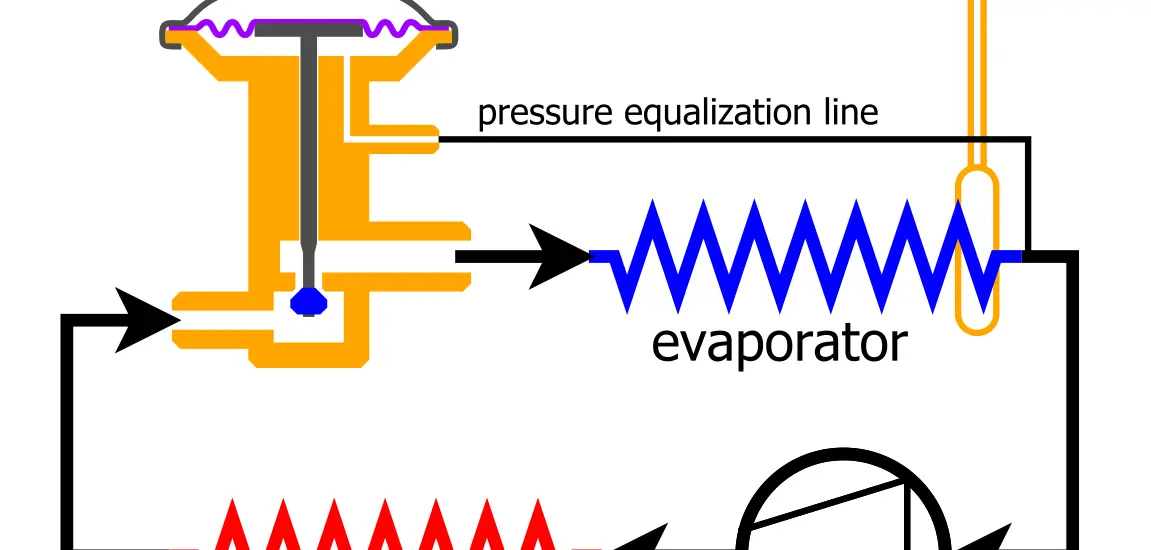The thermostatic expansion valve working principle is at the heart of modern cooling systems. In this guide, we will dissect this intricate concept, making it easy for anyone to understand.

Table of Contents
Understanding the Thermostatic Expansion Valve Working Principle
The thermostatic expansion valve working principle is central to refrigeration and air conditioning systems. It’s a mechanism that regulates the refrigerant’s flow, allowing the system to function efficiently. Let’s dive deeper into the aspects that make it work:
Sensing the Temperature
The TXV contains a bulb filled with a fluid that is sensitive to temperature changes. This bulb is attached to the evaporator coil, where it senses the temperature. As the temperature changes, the fluid inside the bulb expands or contracts, transmitting a signal to the valve.
This is the first step in the regulation process, and it ensures that the valve responds to the exact temperature conditions within the evaporator.
Regulating the Flow
Once the temperature is sensed, the valve adjusts the flow of the refrigerant to match the cooling needs of the evaporator. If the sensed temperature is too high, the valve opens to allow more refrigerant flow, increasing the cooling effect.
If the temperature is too low, the valve restricts the refrigerant flow, reducing the cooling. This precise control allows the system to operate at optimal efficiency, providing just the right amount of cooling where it’s needed.
Opening and Closing
The opening and closing of the valve are controlled by a diaphragm that responds to the signals from the sensing bulb. The diaphragm acts like a flexible wall that moves up and down, controlling the valve’s opening. When the temperature rises, the fluid in the sensing bulb expands, pushing the diaphragm to open the valve more.
Conversely, when the temperature drops, the fluid contracts, pulling the diaphragm to close the valve. This continuous adjustment ensures that the refrigerant flow is always at the right level to match the cooling needs.
Continuous Monitoring
The TXV doesn’t just make a one-time adjustment; it continuously monitors the temperature and adjusts the refrigerant flow as needed. This ongoing monitoring and adjustment mean that the cooling system can respond to changing conditions, such as a hot day turning cooler or a room filling with people.
By always keeping the refrigerant flow at the optimal level, the TXV ensures that the system operates efficiently, keeping the space comfortable while using as little energy as possible.
Check out these other related articles…
Expansion Valve Symptoms: A Comprehensive Guide
Expansion Valve Bulb Position: A Comprehensive Guide
Expansion Valve vs Capillary Tube: A Detailed Comparison
Expansion Valve Thermodynamics: A Comprehensive 411 Guide
Expansion Valve Working Principle: A Comprehensive Guide
Types of Expansion Valve in Refrigeration System: Easy Guide
Thermostatic Expansion Valve in a Refrigeration System: Easy 411 Guide
Common Troubleshooting and Maintenance
Knowledge of the thermostatic expansion valve working principle can aid in troubleshooting and maintenance. Here’s what you need to know:
Inspecting: Regularly check the TXV for signs of wear, leaks, or damage.
Cleaning: Ensuring the valve is clean helps in proper functioning.
Professional Assistance: For serious issues, consulting a professional is advisable as incorrect handling can cause further problems.